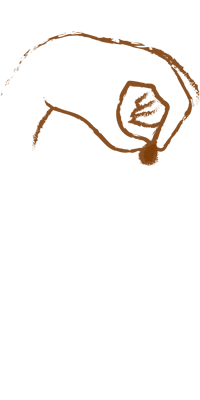Start scrolling to grow your virtual
cocoa tree
Start scrolling to grow your virtual
cocoa tree







1. Seedling
Cocoa grows up to 20 degrees latitude north and south of the Equator. It is a shade-tolerant, moisture-loving, understory rainforest tree.
Cocoa grows from seed. Seeds will germinate and produce good trees when taken from pods not more than 15 days underripe. The Criollo and Forastero varieties of cocoa take longer to become productive. Hybrid varieties become productive three to four years after planting.
Factors such as farm management, soil type, variety of cocoa tree, climate, diseases and pest, etc. have an immense effect on productivity.
The yield of cocoa trees starts to decline 30 years after planting. Rehabilitation in the form of replanting or grafting must be carried out during this period to restore the farm to its state.
Scroll











2. Temperature
Cocoa trees respond well to relatively high temperatures, with a maximum annual average of 30 - 32ºC and a minimum average of 18 - 21ºC.
The cocoa tree will make optimum use of any light available and is traditionally grown in the shade. Its natural environment is the Amazonian forest, which provides natural shade trees. Shading is indispensable in a cocoa trees early years.
On plantations, temporary (i.e. plantains) and permanent shade trees must be planted to protect the young seedlings from excessive sunlight/heat.
Scroll






3. Rain
A hot and humid atmosphere is essential for the optimum development of cocoa trees. In cocoa-producing countries, relative humidity is generally high: often as much as 100% during the day, falling to 70-80% during the night.
Rainfall plays a greater role in annual variations in cocoa yield than any other climactic factor. Trees are very sensitive to a soil water deficiency. Rainfall should be plentiful and well distributed through the year. An annual rainfall level of between 1,500 and 2,000 mm is generally preferred. Dry spells, where rainfall is less than 100 mm per month, should not exceed three months.
Scroll





4. Pollination
Cocoa has the very unusual quality of having flowers and fruit on the tree at the same time. The white and odorless flowers cover the main trunk of the tree. They are pollinated by midges (gnat-like insects) and occasionally by bats.
Pollination usually occurs in the morning and the flowers die within 24 hours if not pollinated.
Scroll







5. Pruning
Pruning of a cocoa tree involves the removal of dead and lower branches, multiple stems, chupons, mistletoes and epiphytes.
It is done after the main harvest.
It is essential because it enables cocoa trees to receive more sunlight, improves aeration, and prevents black pod disease. Lack of pruning will result in too much shade on the farm. The farm will be too cold and diseases and pests such as black pod, moss and stem borers may attack the cocoa, which can reduce the yield of the farm.
Scroll












6. Harvest
The main harvesting season usually starts in October and ends in March. Pods are suitable for harvesting every three to four weeks, after which time the pods become overripe and beans begin to germinate. It is therefore necessary to harvest at regular intervals as the pods do not all ripen at the same time.
During harvesting, it is important not to damage the flower cushion which will produce the flowers and fruits of subsequent harvests, and care must be taken not to damage the tree, which would make it easy for parasitic fungi to penetrate its tissues of the tree. Therefore, the pods are harvested manually by making a clean cut through the stalk with a well-sharpened blade.
Each tree produces around 1,000 beans a year, which is only enough to make one kilogram of chocolate.
Scroll














Start scrolling to explore
the fruit

Fruit
- Grows on the trunks of the tree and takes four to five months to grow and another month to ripen. Altogether, it takes five to eight months from bud to ripe fruit.
- The pod is green while maturing and turns yellow, orange, red or purple when ripe.
- The pods can vary significantly in size, from 10 to 40 cm in length.

Rind
- Rough and leathery; two to three cm thick, protects the pulp and the seeds from external damages.

Pulp
- The pulp of the fruit is pale lavender in color and slippery in texture.
- It is edible and tastes sweet and fresh. The taste is described as vaguely lemony, but it's nothing compared to real chocolate.

Beans
- The cocoa beans are the heart and soul of fruit and the basis for making chocolate.
- There are generally 40 to 60 seeds in each pod.





